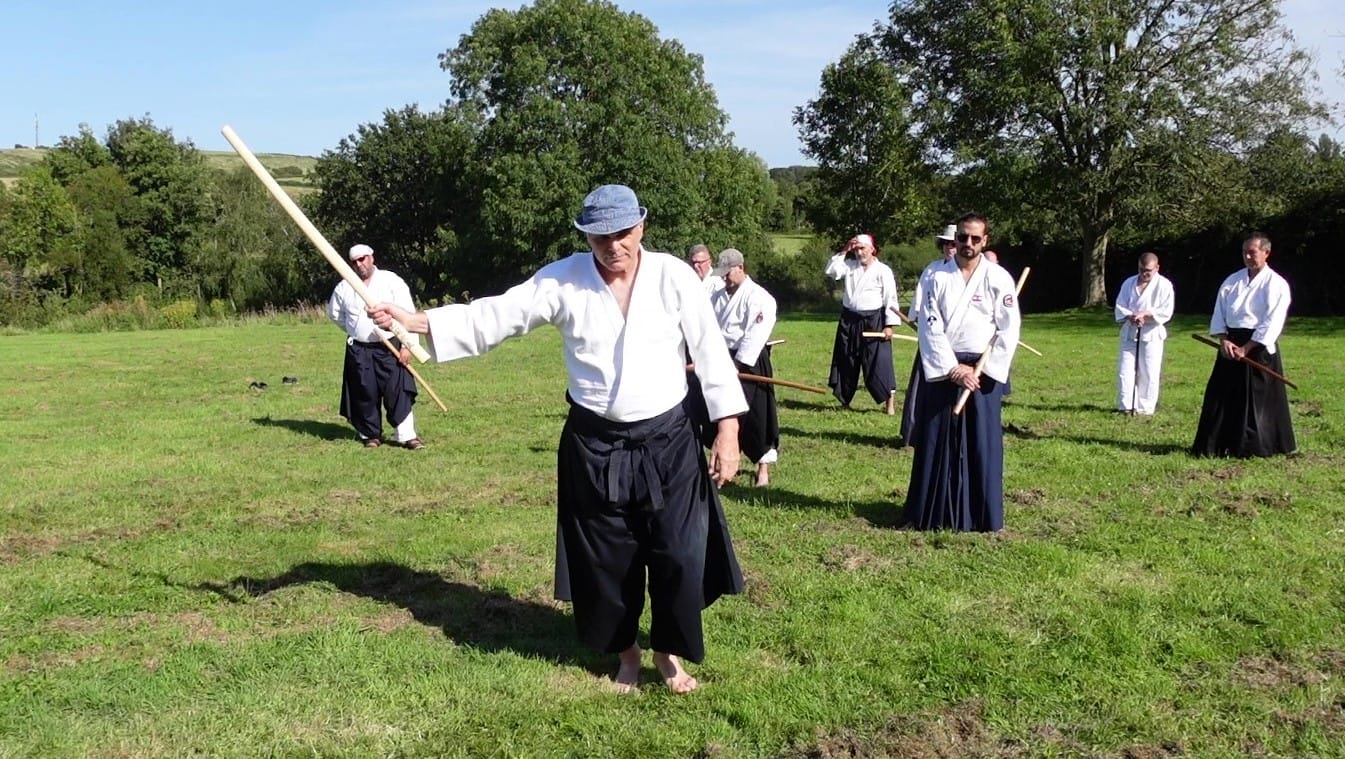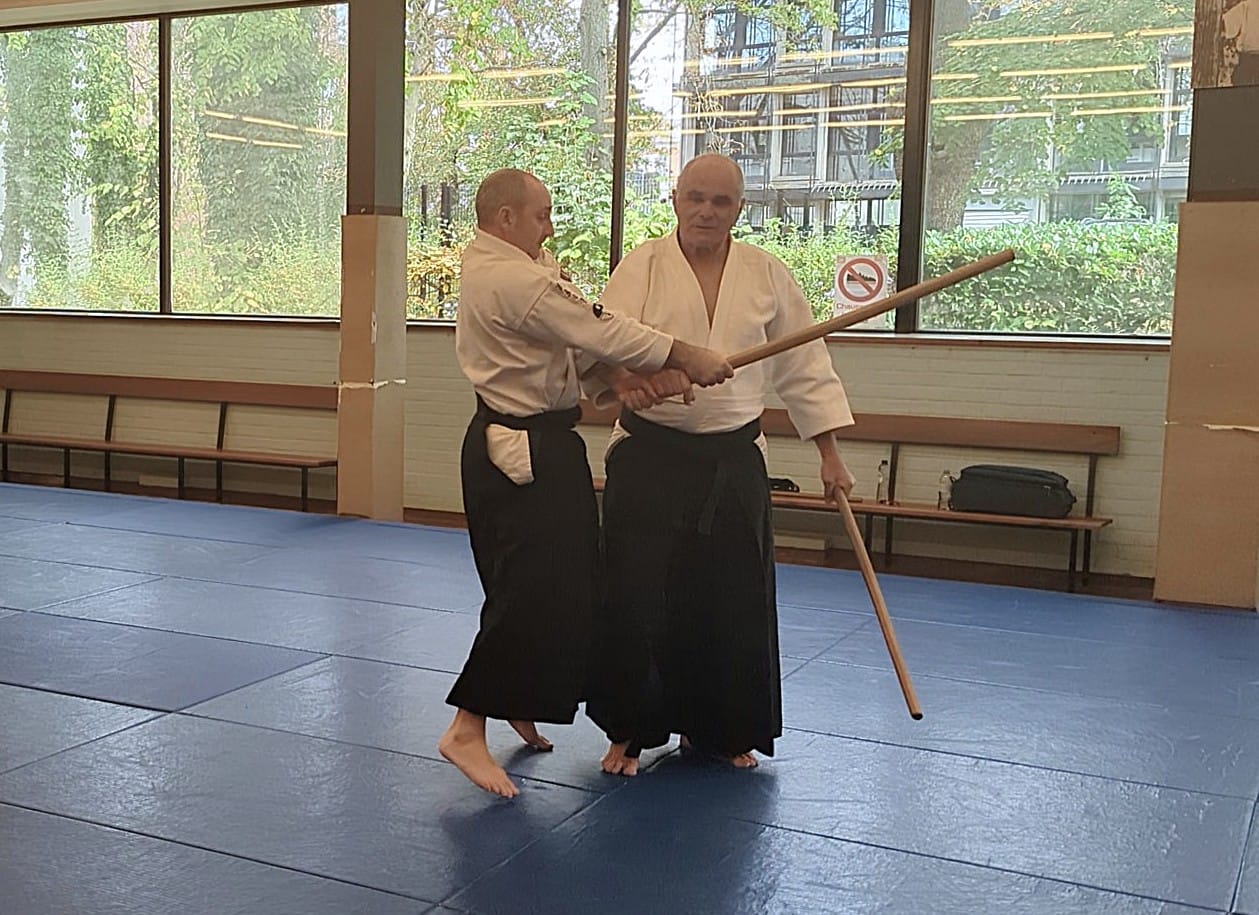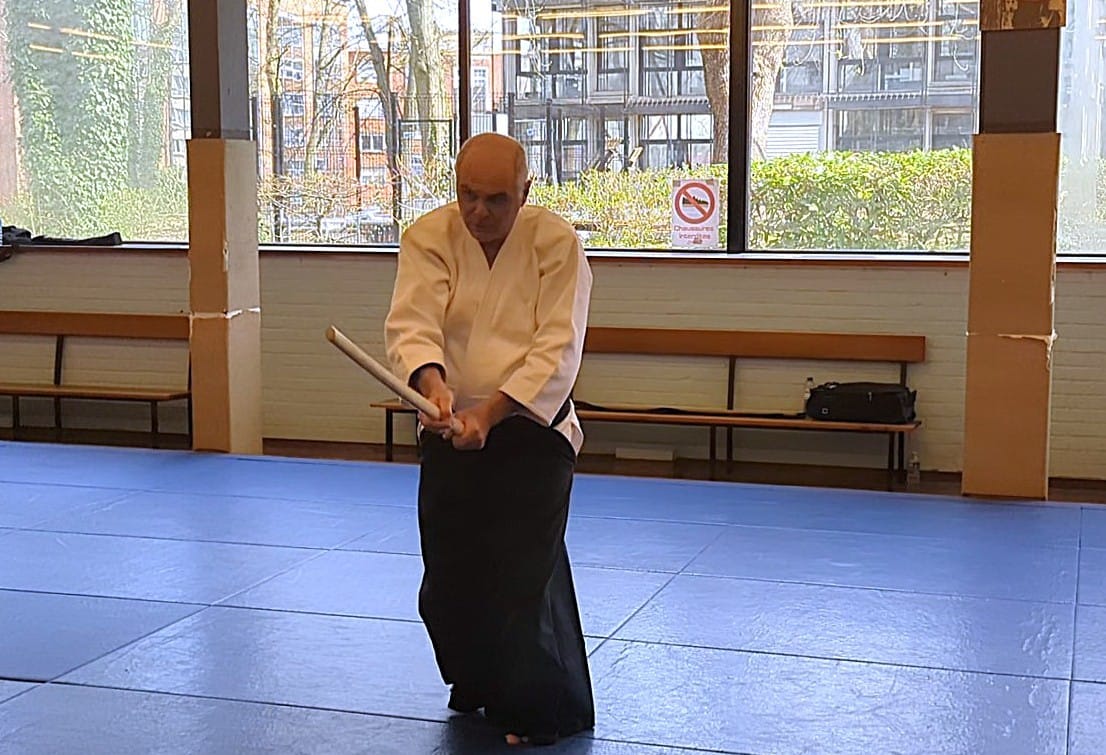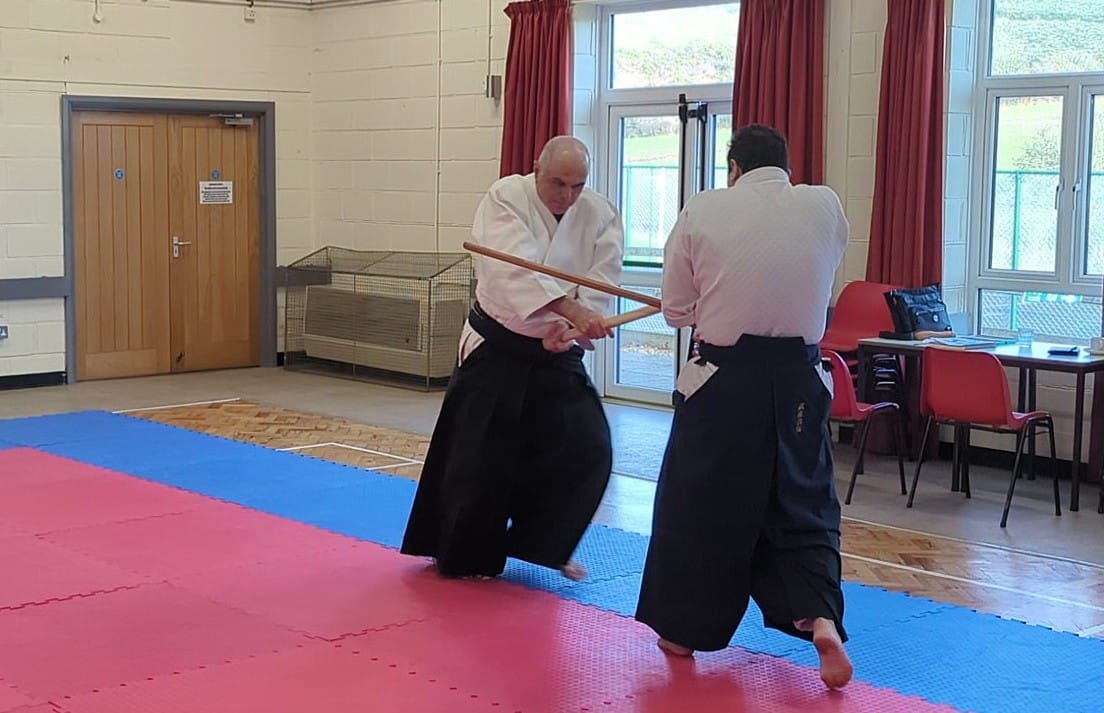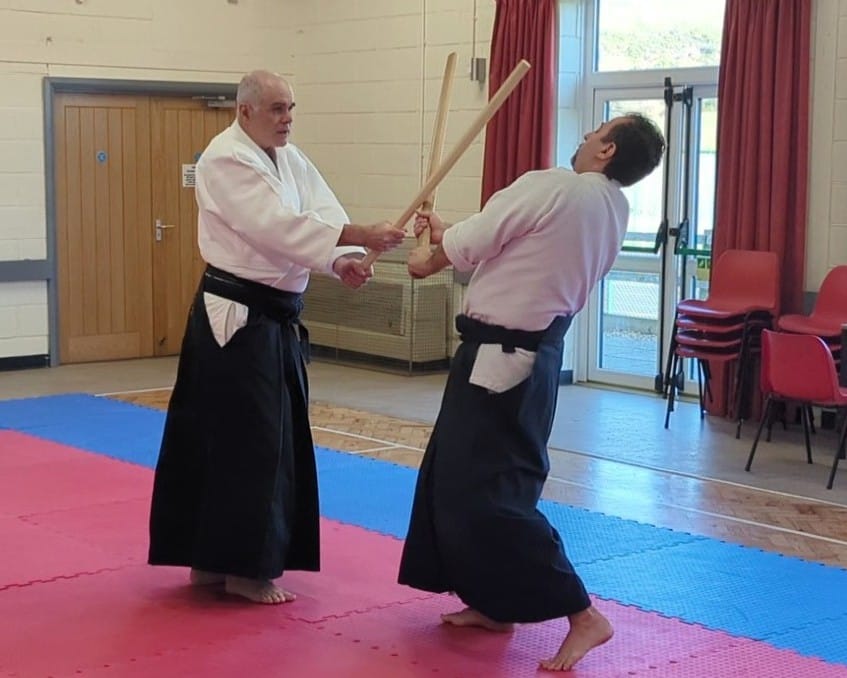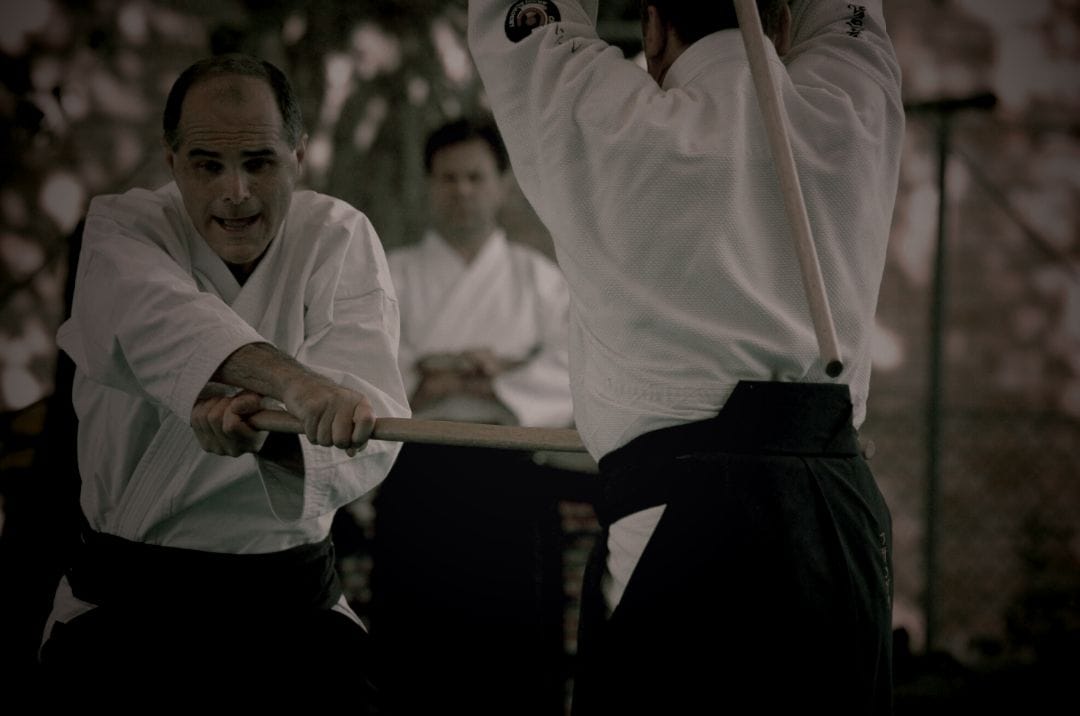At the end of the 60s, a television series, ‘The Prisoner’, starred Patrick McGOOHAN as a man who was detained without knowing why in an enigmatic village by the sea, from where he was constantly trying to escape. The name he went by in this strange village was Number Six.
The following article does not tell the story of his adventures.
Get serious Voarino, this isn't RRRrrrr!!! we're talking about here, it's Aikido and let's take a look at the video to make sure:
Suburi number 6 of the Aiki-ken is the first suburi in which the tsuki appears.
It is interesting to note the organisation of the ken suburi in Master SAITO's method:
1, 2, 3, 4: shomen
5: yokomen
6, 7: yokomen + tsuki
The order is the same as in Western fencing: the cut and the thrust.
It is absolutely possible to make a tsuki after a shomen, and indeed this is what is done in the first step of suburi 6 and 7. On the other hand, the movement that comes naturally after a tsuki is a yokomen. This is why tsuki is associated with yokomen in the training method. This is a consequence of the unavoidable angulation of the blade in tsuki. This angulation is itself a consequence of the fact that the Japanese sword is held with both hands, and that the bodily constraints resulting from the rotation of the hips make it impossible to keep the blade straight (vertical) when striking tsuki.
Let us say once again that you should not move your leg forward and then strike, you should strike while moving forward, for yokomen and tsuki as for shomen . There may seem to be little difference between these two actions, but it is essential. The sword is faster than the body; it always arrives a little before the body, and that's fundamental.
By the way, this helps us to understand the ‘detail’ that I keep repeating in an admittedly tiresome manner: at the moment of the cut, the body is not in a triangle (hanmi), it is in a square (kenka goshi):
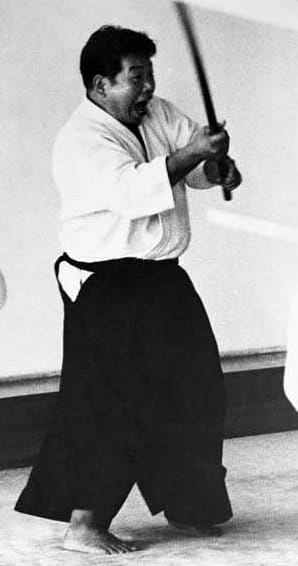
The hanmi position (the body immediately following the strike) is resumed a fraction of a second after the action in kenka goshi.

